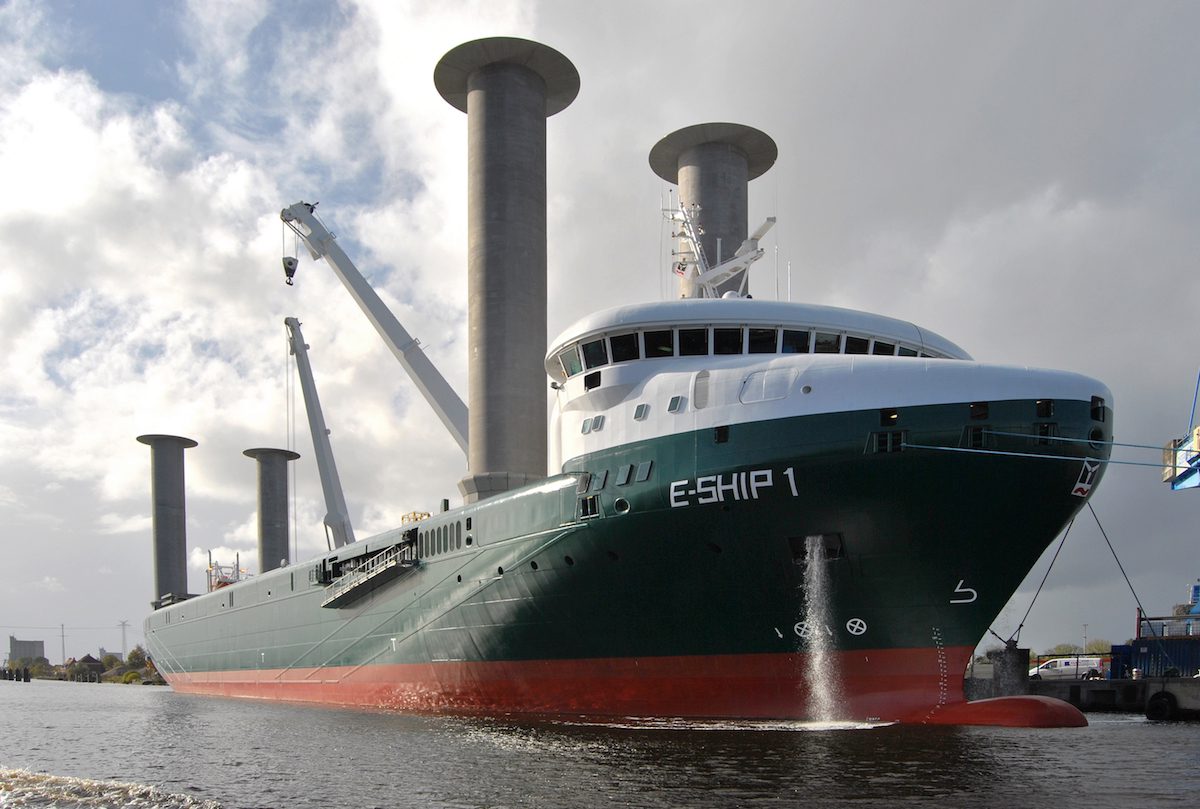uses Flettner Rotor technology for propulsion.
The Energy Technologies Institute in the UK is looking for partners in a project that will test the use of flattener rotors as a way to increase fuel efficiency for large ocean going vessels.
Flettner rotors use a spinning cylinder to convert the force of the wind into thrust to help propel the ship by tapping the forces of the magnus effect, a commonly observed effect in which a spinning ball, or cylinder in this case, curves away from its principal path. The concept of flettner sail rotors has been demonstrated on ships since the 1920s, but for the most part the technology failed to catch on. Today, at least two vessels have trialled the technology in recent years.
The ETI says its project will be the first demonstration on such a large vessel and will provide valuable insights into real world fuel savings and ease of operation.
ETI says the new project seeks to design, supply, fit and demonstrate flettner rotor sail technology on a vessel to be sourced by ETI with hopes of demonstrating a minimum 10% fuel savings.
“This is a project to design, develop and fit flettner rotor blades – effectively mechanical sails – which will then be demonstrated and tested at sea in real life conditions,” says Andrew Scott , manager for the ETI’s Flettner Rotor Supply, Install and Commission Project. “Studies have shown that flettner blades could be beneficial in certain sea conditions around the world reducing fuel consumption in ships of between 7 and 15%. However, there has been insufficient full scale demonstration on a suitable marine vessel to prove the technology benefits.”
For partners, ETI is seeking out credible third parties who are capable of designing, building and installing (and providing support post-installation) Flettner Rotors which meet performance requirements on a vessel specified by the ETI.
“Successfully demonstrating this would make the technology more attractive to shipping companies and investors,” adds Scott. “The technology, if proved successful, could also be retrofitted to existing shipping fleets and play a significant role in reducing the fuel costs, so improving environmental impact.”
The Energy Technologies Institute (ETI) is a public-private partnership between BP, Caterpillar, EDF, Rolls-Royce, Shell, and the UK Government.
The most famous use of Flettner Rotors today is on the E-Ship 1, which has been in service since 2010 for Enercon transporting wind energy converters. The company says that depending on weather conditions, the rotors have helped the vessel achieve fuel savings of up to 15%.
Tags:

 Join The Club
Join The Club











